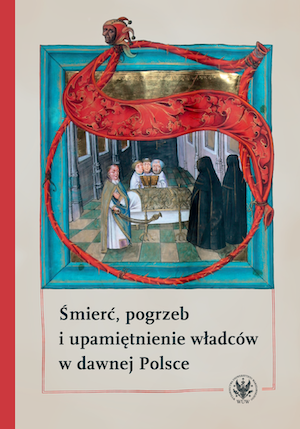Castrum doloris Jana Kazimierza i Michała Wiśniowieckiego
Castrum doloris of Jan Kazimierz and Michał Wiśniowiecki
Author(s): Maria Kałamajska-Saeed
Subject(s): Middle Ages, 6th to 12th Centuries, 13th to 14th Centuries, 15th Century, 16th Century, 17th Century, 18th Century
Published by: Wydawnictwa Uniwersytetu Warszawskiego
Keywords: castrum doloris; Jan Kazimierz; Michał Korybut Wiśniowiecki; funerals of Polish kings; iconographic document; 1676
Summary/Abstract: Polish royal ceremonial required that the coronation of a new monarch took placedirectly after a solemn burial of the predecessor at the Wawel Cathedral. In the historyof Poland only once, on 31st January 1676, before the coronation of Jan Sobieski, thefuneral of his two predecessors took place: Jan Kazimierz, who died on 16th December1672 in France was buried there, and Michał Wiśniowiecki, who died on 1st September1673. The unique character of this event made it especially impressive, which isunanimously confi rmed in the accounts of the witnesses, who describe the course andgrandeur of the ceremony. As the historians could only use written sources thus far,the iconographic document which is presented in the material carries considerableweight. It is a castrum doloris drawing, bearing the title: The Depiction of the Catafalqueof Two Polish Monarchs at the Conducted Funeral of Jan Casimir and Michael I [MichałKorybut Wiśniowiecki] in 1676 at the Wawel Castle in Cracow , which was found bythe author of the article in the Manuscript Department of the National Library of Russiain Petersburg. It is not artistically perfect, but when compared with the descriptions,it confi rms that the appearance of the object is correct; the character of the writingshows that the drawing was made in 1676 or around that year. It is not certain if theanonymous draughtsman made it from nature, but neither its formal fl aws, nor itsimitative nature make it less interesting and worth further research. Such an interestingpolonicum should not be lost among the varia of the Petersburg Library, but madeavailable to wider range of scholars, who would be able to conduct more detailedresearch on it.
Book: Śmierć, pogrzeb i upamiętnienie władców w dawnej Polsce
- Page Range: 222-229
- Page Count: 8
- Publication Year: 2020
- Language: Polish
- Content File-PDF

